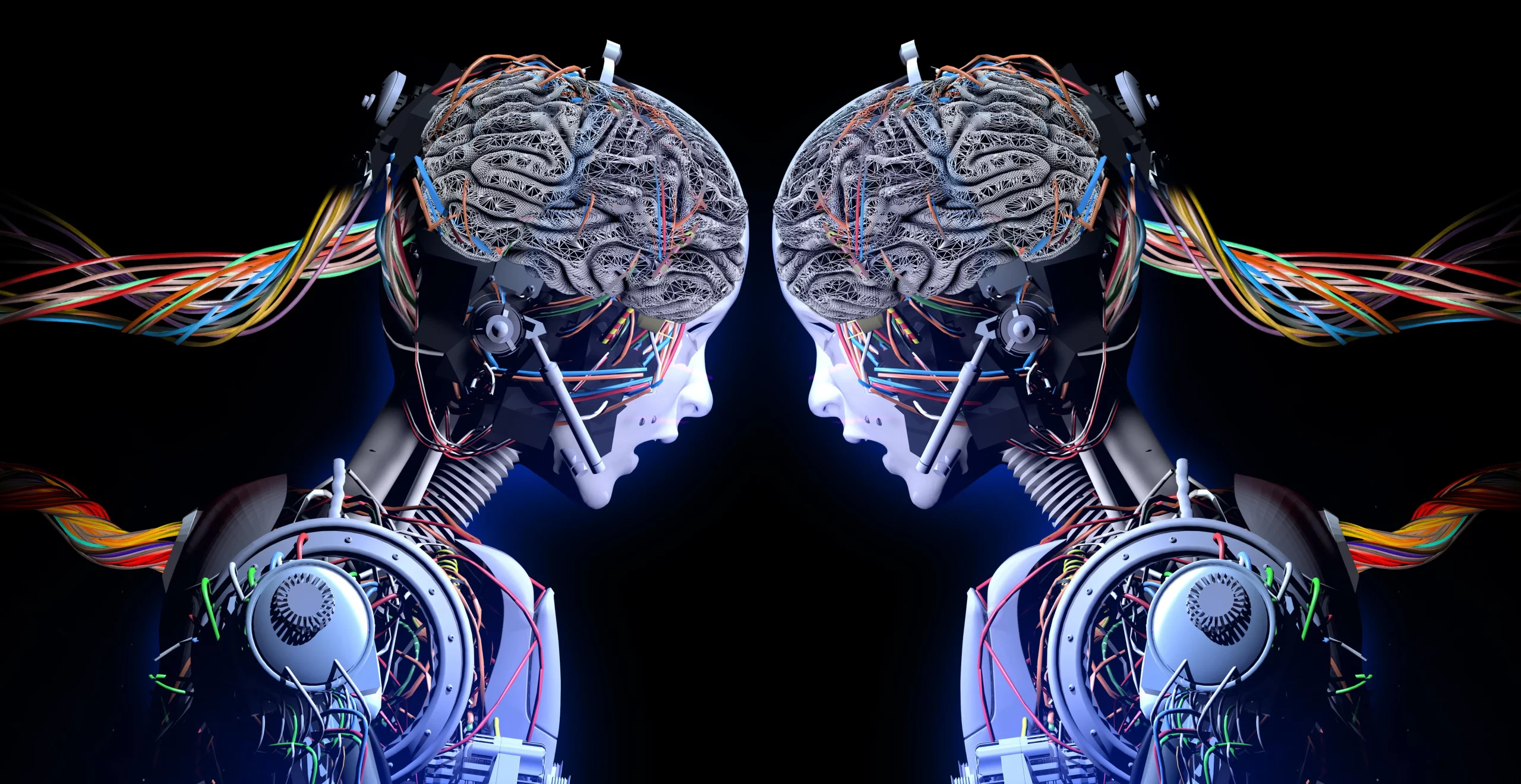Digital-twin technology is a transformative concept that creates virtual replicas of physical objects, systems, or processes. These digital models are used to mirror real-world conditions, capturing real-time data from their physical counterparts to simulate, analyze, and predict future performance. In essence, a digital twin is a dynamic digital representation of a physical entity.
Imagine being able to create an exact digital replica of a car, an entire manufacturing plant, or even a city’s infrastructure. This virtual twin is continuously fed with real-time data from IoT (Internet of Things) sensors, enabling businesses to experiment with different scenarios, optimize operations, and improve decision-making before changes are implemented in the real world. This unique ability to blend the physical and digital realms is revolutionizing industries like manufacturing, healthcare, automotive, and even smart city development.
The Evolution of Digital-Twin Technology
The concept of digital twins was first introduced by Dr. Michael Grieves at the University of Michigan in 2002 as part of product lifecycle management (PLM). Initially, the idea was simple: to create digital representations of physical products to track their lifecycle from design through production to eventual retirement.
Over the years, advancements in IoT, artificial intelligence (AI), and data analytics have enabled the development of more sophisticated digital twins that can monitor entire systems in real time. For example, NASA has been using digital-twin technology to monitor and simulate spacecraft systems since the 2010s, enabling it to predict and resolve issues before they occur.
Today, the applications of digital-twin technology extend beyond individual products. It is now being applied to entire ecosystems, including smart cities, transportation systems, and even healthcare networks, offering predictive insights that drive optimization and efficiency at every level.
How Does Digital-Twin Technology Work?

At its core, digital-twin technology relies on continuous data streams that bridge the physical and digital worlds. These data streams come from sensors, cameras, and other IoT-enabled devices attached to physical objects. The data collected is transmitted to cloud-based platforms, where advanced algorithms analyze and convert it into actionable insights. The process typically involves four key stages:
- Data Collection: The foundation of digital-twin technology lies in its ability to collect real-time data. Sensors placed on the physical object continuously gather information such as temperature, pressure, speed, wear and tear, and operational status.
- Digital Model Creation: A digital model is created to mirror the physical object or system. This model represents the physical attributes and behaviors of the asset and can be as simple as a single product or as complex as an entire factory or supply chain network.
- Real-time Synchronization: As the physical object or system operates, its twin is continuously updated with new data to reflect real-time conditions. This allows businesses to detect anomalies, predict potential failures, and simulate what-if scenarios.
- Simulation and Analysis: Organizations use the digital twin to run simulations, analyze performance, and test different scenarios without disrupting real-world operations. This helps in optimizing processes, enhancing product designs, and predicting outcomes more accurately.
Types of Digital-Twin Technology in Product Development
Digital twins come in various forms, each serving a unique purpose within product development, supply chain optimization, and system management. Below are some of the most common types of digital twins:
1. Product Twins
Product twins are digital replicas of physical products throughout their lifecycle. They enable companies to track and monitor product performance from the design stage through production, deployment, and eventual decommissioning. This type of twin helps manufacturers simulate various design changes, optimize engineering processes, and improve the overall quality of products. For example, car manufacturers can create virtual models of new vehicles to test safety features, aerodynamics, and fuel efficiency before building physical prototypes.
2. Process Twins
Process twins represent entire operational processes rather than individual products. They model the flow of data, material, and resources in processes like manufacturing lines or logistics networks. Process twins are particularly valuable in industries with complex operations, such as aerospace, pharmaceuticals, and energy. For example, a digital twin of an assembly line can identify bottlenecks, test alternative workflows, and predict the impact of changes on overall efficiency.
3. System Twins

System twins monitor and manage interactions between multiple processes or assets within a larger system. A system twin might model the relationship between different components of a smart grid, transportation network, or industrial plant. By simulating how individual assets interact within a larger system, system twins help organizations optimize performance, reduce costs, and avoid downtime.
4. Environmental Twins
Environmental twins, also known as infrastructure twins, represent physical spaces such as buildings, cities, or natural environments. These twins help urban planners, architects, and environmental scientists model and analyze interactions between the built environment and natural ecosystems. For instance, digital twins of smart cities can simulate the impact of traffic flow, energy consumption, and weather patterns, allowing urban planners to make data-driven decisions.
Benefits of Digital-Twin Technology for Organizations
The adoption of digital-twin technology offers numerous tangible benefits across industries, enabling businesses to streamline operations, reduce costs, and increase innovation. Here are some of the top benefits:
1. Real-Time Decision-Making and Predictive Insights
One of the most significant advantages of digital twins is their ability to provide real-time insights into operational performance. Digital twins collect and process data from sensors to deliver an up-to-date view of how a physical object or system is functioning. This helps decision-makers make informed choices quickly and accurately, improving overall efficiency.
Moreover, digital twins have predictive capabilities. By simulating different scenarios, they allow organizations to anticipate potential issues before they arise. This predictive insight is especially valuable in industries like healthcare, manufacturing, and transportation, where equipment downtime or system failures can be costly and disruptive.
For example, a manufacturing plant using a digital twin can simulate different production schedules and equipment configurations to optimize output while minimizing energy consumption. If a machine is predicted to fail, preventive maintenance can be scheduled, avoiding costly downtime.
2. Accelerated Product Development and Quality Enhancement
Digital-twin technology accelerates product development cycles by reducing the need for physical prototypes. By creating a virtual replica of a product, engineers and designers can run simulations to test various design changes, identify potential flaws, and optimize performance before a physical model is built. This approach saves time and reduces costs associated with building and testing multiple prototypes.
In the automotive industry, companies like BMW and Tesla use digital twins to simulate vehicle designs and road tests, optimizing safety features and fuel efficiency. This leads to faster time-to-market and improved product quality, as digital twins allow for continuous improvements throughout the product lifecycle.
3. Optimized Supply Chain and Operations Management
Digital twins provide supply chain managers with a real-time view of inventory, logistics, and customer demand, enabling them to make data-driven decisions that improve operational efficiency. By creating a digital twin of the entire supply chain, companies can monitor the flow of goods and materials, identify potential bottlenecks, and adjust production schedules to match demand.
For example, Amazon uses digital-twin technology to optimize its vast supply chain and logistics network. By simulating various scenarios, such as changes in customer demand or transportation disruptions, Amazon can make real-time adjustments that minimize costs and improve delivery times.
4. Cost Reduction and Resource Efficiency
Digital twins help companies identify inefficiencies and reduce operating costs by optimizing resource usage. In industries such as manufacturing and energy, digital twins can monitor equipment performance and energy consumption in real time, providing insights into where resources can be better allocated.
For example, a power plant can use a digital twin to simulate different operating conditions and adjust energy output based on real-time demand, reducing fuel consumption and emissions. Similarly, manufacturers can use digital twins to monitor machinery and identify opportunities to reduce waste and improve overall efficiency.
5. Enhanced Customer Experience and Personalization
Digital-twin technology enables companies to deliver more personalized products and services by simulating customer behavior and preferences. For example, a digital twin of a customer’s vehicle can monitor driving habits, fuel efficiency, and maintenance needs, allowing automakers to offer personalized services, such as predictive maintenance reminders or customized insurance plans.
In healthcare, digital twins of patients (also known as “virtual patients”) can simulate the effects of different treatments or medications, helping doctors make more informed decisions about care. This level of personalization enhances customer satisfaction and can lead to increased loyalty and revenue growth.
Real-world Applications of Digital-Twin Technology

Digital twins are already making a profound impact across a wide range of industries. Below are several real-world examples of how companies are using digital twins to drive innovation and improve performance:
1. Emirates Team New Zealand
In the competitive world of sailing, Emirates Team New Zealand used digital-twin technology to optimize boat designs. By simulating thousands of hydrofoil designs, the team was able to fine-tune the boat’s performance, ultimately securing a win in the America’s Cup. The digital twin allowed the team to test various conditions without building physical prototypes, saving both time and money.
2. SoFi Stadium
SoFi Stadium in Los Angeles, home to the LA Rams and LA Chargers, implemented a digital twin to manage everything from crowd control to energy usage. The stadium’s digital twin aggregates data from sensors, cameras, and IoT devices to optimize operations in real time. It can simulate different crowd flow scenarios during events to ensure efficient movement, reducing congestion and improving the overall fan experience.
3. SpaceX
SpaceX uses digital-twin technology to monitor the performance of its spacecraft, including the Dragon capsule. The digital twin tracks real-time data on the spacecraft’s trajectory, loads, and propulsion systems, enabling engineers to predict potential issues and make adjustments mid-flight. This helps ensure mission safety and reliability, allowing SpaceX to continually push the boundaries of space exploration.
4. Unilever’s Digital Factory
Unilever has adopted digital-twin technology in its manufacturing plants to create “digital factories.” By simulating production lines, Unilever can optimize processes, reduce waste, and improve product quality. The digital twin allows plant managers to monitor equipment performance in real time, predict maintenance needs, and avoid costly downtime. This approach has helped Unilever improve efficiency and reduce its environmental footprint.
Digital Twins and Environmental Sustainability
As the world grapples with climate change and the need for sustainable business practices, digital-twin technology plays a critical role in helping organizations reduce their environmental impact. By optimizing resource use, minimizing waste, and improving energy efficiency, digital twins are enabling businesses to achieve their sustainability goals.
For example, Siemens is using digital twins in its wind turbines to optimize energy production and reduce maintenance costs. The digital twin simulates how the turbines operate in different weather conditions, allowing Siemens to adjust their performance and maximize energy output while minimizing wear and tear.
In the automotive industry, electric vehicle manufacturers are using digital twins to simulate battery performance and predict the impact of various driving conditions on range and efficiency. This helps engineers design more efficient vehicles and reduce the environmental impact of transportation.
Cloud Platforms and Digital-Twin Technology
The integration of cloud platforms with digital-twin technology has revolutionized the scalability and accessibility of these systems. Cloud platforms provide a centralized space to store, analyze, and process the vast amounts of data generated by digital twins. By hosting digital twins on cloud infrastructure, organizations can remotely monitor and manage their digital models, allowing for real-time updates and collaboration across multiple locations.
Cloud platforms also make it easier to integrate digital twins with other technologies, such as the Internet of Things (IoT) and artificial intelligence (AI), which rely on high-speed data processing and storage. For example, a digital twin of a smart city might pull data from thousands of IoT sensors in real-time, storing this data in the cloud for analysis and optimization.
Companies such as Microsoft Azure and Amazon Web Services (AWS) offer specialized cloud solutions for digital-twin deployment, enabling businesses to scale their operations without the need for extensive on-site infrastructure. This not only reduces costs but also increases flexibility, allowing organizations to quickly adapt to changing market demands and technological advancements.
The Future of Digital-Twin Technology: Integration with AI and Machine Learning
The future of digital-twin technology is closely tied to advancements in artificial intelligence (AI) and machine learning (ML). As these technologies continue to evolve, they will unlock new opportunities for digital twins to become even more powerful and autonomous.
By integrating AI and ML algorithms, digital twins can analyze vast amounts of data more quickly and accurately. This enables organizations to uncover hidden patterns, optimize complex systems, and automate decision-making processes. For example, AI-powered digital twins can automatically adjust production schedules based on real-time demand, improving efficiency and reducing waste.
Additionally, generative AI can enhance the design and development of digital twins by generating new ideas and solutions based on existing data. This could lead to more innovative product designs, optimized processes, and improved overall performance.
Challenges in Implementing Digital-Twin Technology
Despite its many benefits, adopting digital-twin technology is not without its challenges. Organizations must overcome several hurdles to successfully implement and scale digital twins:
- Data Quality and Integration: For digital twins to be effective, they must be fed with high-quality, real-time data. However, many organizations struggle with integrating data from disparate sources, such as IoT sensors, legacy systems, and cloud platforms. Ensuring data consistency and accuracy is critical for the success of digital twins.
- Security and Privacy Concerns: Digital twins often rely on sensitive data, such as customer information or proprietary operational data. This raises concerns about data security and privacy, particularly in industries like healthcare and finance. Organizations must implement robust cybersecurity measures to protect their digital twins from potential threats.
- Talent Shortage: Developing and maintaining digital twins requires specialized talent, including data scientists, IoT engineers, and AI experts. However, there is currently a shortage of skilled professionals with the expertise needed to implement and manage digital-twin technology.
- Cost of Implementation: Building a digital twin can require significant upfront investment in hardware, software, and infrastructure. For small and medium-sized businesses, the cost of implementing digital twins may be prohibitive, especially if they lack the resources to invest in advanced IoT and AI technologies.
Predictive Analytics with Digital-Twin Technology
One of the most significant advantages of digital-twin technology is its ability to enable predictive analytics. By leveraging real-time data and historical performance metrics, organizations can predict future outcomes and optimize their operations accordingly. For example, in industries such as manufacturing or energy, digital twins can predict potential equipment failures or maintenance needs, allowing for proactive interventions and reducing costly downtime.
A digital twin can simulate various scenarios, considering real-time factors, to forecast future performance. This predictive capability helps businesses anticipate potential bottlenecks, adjust to changing market conditions, or even predict customer demand more accurately. For instance, in supply chain management, digital twins use predictive analytics to forecast demand fluctuations and optimize inventory levels, reducing costs and improving operational efficiency.
In healthcare, predictive analytics powered by digital twins can be used to simulate patient responses to treatments, improving personalized care. The potential for predictive analytics in various industries means that businesses can plan for future challenges with more certainty, enhancing their overall resilience.
Conclusion
Digital-twin technology is reshaping industries by providing real-time insights, improving efficiency, reducing costs, and enhancing customer experiences. As businesses continue to embrace digital transformation, digital twins will play an increasingly important role in driving innovation and maintaining competitiveness. From product development and supply chain optimization to sustainability and customer experience, the potential applications of digital-twin technology are virtually limitless.
Moreover, as AI and machine learning continue to advance, the capabilities of digital twins will expand even further, enabling organizations to unlock new levels of automation, creativity, and scalability. However, to fully realize the potential of digital-twin technology, organizations must address the challenges of data integration, security, talent, and cost.
In the future, digital twins will become an integral part of everyday business operations, helping organizations navigate the complexities of the modern world with greater precision, agility, and intelligence.




